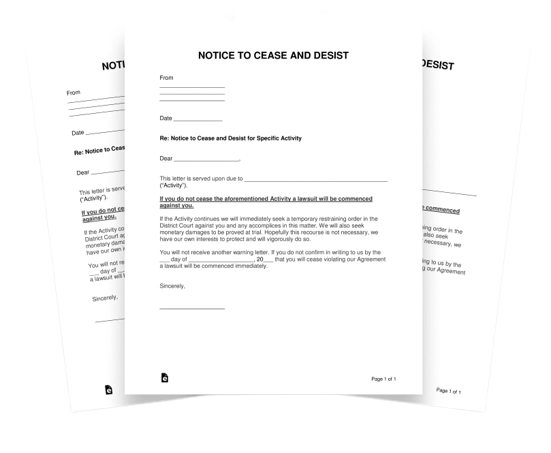Supplier Agreements
Enabling businesses to provide premium goods or services under their own brands

Download a Supplier Agreements template
Created and approved by the experts at CMI Group for your use.

Download a Supplier Agreements template
Created and approved by the experts at CMI Group for your use.
Businesses in today’s globalized economy depend on a sophisticated network of suppliers to give them the supplies they require to run their operations. However, maintaining these supplier partnerships can be difficult, especially when it comes to negotiating contracts that safeguard the interests of both parties. The terms and conditions of these partnerships, from pricing and payment terms to quality control and delivery schedules, are outlined in supplier agreements, which are crucial contracts.
This blog will discuss emerging trends, predictions for the future of supplier agreements, and best practices for reducing supply chain risks. It will also discuss the worth of value-based metrics. By the conclusion of this blog, you’ll know more about how to develop solid, long-lasting supplier agreements that help you achieve your company’s objectives while lowering risks and guaranteeing a steady supply chain.
Mitigating Supply Chain Risks With Supplier Agreements
Supply networks are becoming more intricate and interconnected in today’s global economy. As a consequence, businesses now place a high priority on managing supply chain risks. Strong supplier agreements that expressly lay out the terms and conditions of supplier relationships are one of the best methods to mitigate these risks. We’ll talk about the best ways to manage supply chain risks through supplier agreements in this part.
Risks in the supply chain can take many different forms, such as interruptions in the flow of goods or services, problems with quality, noncompliance with regulations, and harm to one’s image. The operations, finances, and reputation of a business may be significantly impacted by these risks. For instance, manufacturing delays brought on by supply chain disruptions may result in missed deadlines and financial losses. Similar to how a quality problem can hurt a business’ image and cause lost sales. You can take proactive measures to mitigate threats to your supply chain by being aware of them.
To reduce supply chain risks, a strong supplier deal should contain several essential components. First and foremost, the agreement needs to be very clear about the supplier’s expected deliverables and job scope. This can assist in avoiding misunderstandings and guarantee that the supplier provides the requested products or services. Second, the agreement should include detailed quality control requirements and procedures to guarantee that the goods or services satisfy the necessary standards. Third, the agreement should outline the conditions of payment, including fines for late or unsatisfactory performance. Last but not least, the agreement must contain provisions for resolving disputes quickly should they occur.
To effectively manage supply chain risks through supplier agreements, businesses should follow best practices, including:
- Conducting thorough due diligence on potential suppliers to assess their capabilities, reputation, and compliance record.
- Negotiating supplier agreements based on a clear understanding of each party’s rights and obligations.
- Monitoring supplier performance on an ongoing basis to ensure compliance with the agreement.
- Regularly reviewing and updating supplier agreements to reflect changes in the business environment or supply chain risks.
- Collaborating with suppliers to identify and address potential risks proactively.
By following these best practices, businesses can establish strong, sustainable supplier relationships that mitigate supply chain risks and support their business goals.
Before entering into any negotiation, thorough preparation is essential. Familiarize yourself with the supplier's background, industry trends, and market conditions. Identify your organization's needs, objectives, and key negotiation points. Gathering relevant information will enable you to negotiate from a position of strength.
Establishing clear objectives is crucial for successful negotiations. Determine your desired outcomes, such as price, quality, delivery schedules, and contractual terms. Prioritize your objectives based on their importance to your business. Clarity on objectives will guide your negotiation strategy and prevent you from getting sidetracked.
Negotiations should aim for a win-win outcome, benefiting both parties involved. Adopt a collaborative approach that focuses on creating value and building long-term relationships. Look for opportunities to explore mutual interests, such as joint marketing initiatives or shared risk/reward structures. By fostering cooperation, you can achieve agreements that satisfy both your organization's needs and those of your suppliers.
Communication plays a pivotal role in negotiations. Listen actively to the supplier's concerns, understand their perspective, and articulate your own position clearly. Use open-ended questions to uncover underlying interests and gather relevant information. Effective communication builds rapport, trust, and helps find common ground during negotiations.
Utilize data and industry benchmarks to support your negotiation positions. Gather information on pricing, market trends, and competitor agreements to negotiate better terms. Be prepared to present your findings in a compelling manner to strengthen your bargaining position. Demonstrating a thorough understanding of the market will give you an edge during negotiations.
Negotiations often involve compromises and finding creative solutions. Be flexible in exploring alternative options that could address both parties' interests. Consider value-added services, flexible payment terms, or volume-based incentives to achieve a mutually beneficial agreement. A willingness to think outside the box can lead to innovative solutions and stronger partnerships
While focusing on immediate goals is important, always maintain a long-term perspective in supplier negotiations. Aim to build sustainable relationships that go beyond a single transaction. Consider the supplier's reliability, track record, and ability to adapt to your changing business needs. Investing in long-term partnerships can yield benefits such as improved service levels, preferential pricing, and access to new innovations.
Ensure that the final supplier agreement reflects the negotiated terms accurately. Seek legal expertise to review and finalize the contract, highlighting any potential risks or ambiguous clauses. A well-drafted contract minimizes misunderstandings and provides a clear framework for the relationship. Regularly review and update agreements as business needs evolve.
Free 15-minute consultation for Supplier Agreement with our experienced lawyers.
The Future Of Supplier Agreements Trends And Predictions For 2025
The growing use of technology to simplify and automate the supplier agreement procedure is a significant trend. Software solutions that can handle contracts, monitor supplier performance, and automate payment procedures are becoming increasingly popular among businesses. Costs can be cut, productivity can be increased, and mistakes can be minimized.
The increasing importance of sustainability and social responsibility in supplier agreements is another development. Businesses face pressure to make sure that their supply networks are moral and sustainable as consumers become more environmentally and socially aware. This may entail incorporating sustainability criteria, such as carbon emissions, waste reduction, and fair labor policies, into supplier contracts.
Additionally, there is a rising tendency in supplier agreements toward collaboration and partnership. Businesses are increasingly seeking to develop long-term, mutually beneficial relationships with suppliers rather than seeing them as competitors to be bargained with. This could entail splitting benefits and risks, developing goods together, or even starting joint ventures.
Incorporating Value-Based Metrics In Supplier Agreements
The most important factor in a normal supplier agreement is the pricing. Businesses that only concentrate on price, however, might pass up important advantages that come from value-based measures. Measures of supplier success that go beyond price, such as delivery performance, quality, sustainability, and innovation, are known as value-based metrics. Businesses can make sure that their supplier partnerships are not just about cost savings but also about driving value by including these metrics in their supplier agreements. Here are some key points to consider when incorporating value-based metrics into supplier agreements:
Value-based metrics are measures of supplier performance that go beyond pricing, including delivery performance, quality, sustainability, and innovation. These metrics can be used to incentivize suppliers to improve their performance in areas that are critical to the business.
Businesses can gain a number of advantages by incorporating value-based metrics into their supplier deals. These measures can motivate suppliers to place a higher priority on quality, sustainability, and innovation, which will result in higher-quality goods and services. Value-based measures can encourage cooperation and ongoing development as both parties work together to accomplish common objectives. Examples of value-based measurements and how supplier agreements can make use of them
On-time delivery, defect rate, environmental impact, and addition to product innovation are a few examples of value-based metrics. By offering bonuses or other rewards for hitting certain goals, these metrics can be used to encourage suppliers to better their performance in these areas.
When incorporating value-based metrics into supplier agreements, businesses should start by identifying the key areas that are important to their operations. They should then define specific metrics that align with these areas and set targets that suppliers must meet to receive bonuses or other incentives. The agreement should also include provisions for tracking and reporting supplier performance in these areas.
Businesses must make sure that their supplier agreements are fiscally viable in addition to using value-based metrics. Value-based metrics and price considerations must be balanced in order to make the supplier partnership profitable for both parties
Got An Issue You Want To Chat To A Legal Professional?
*Free consultation is limited to 15 minute phone call for us to give preliminary advice






